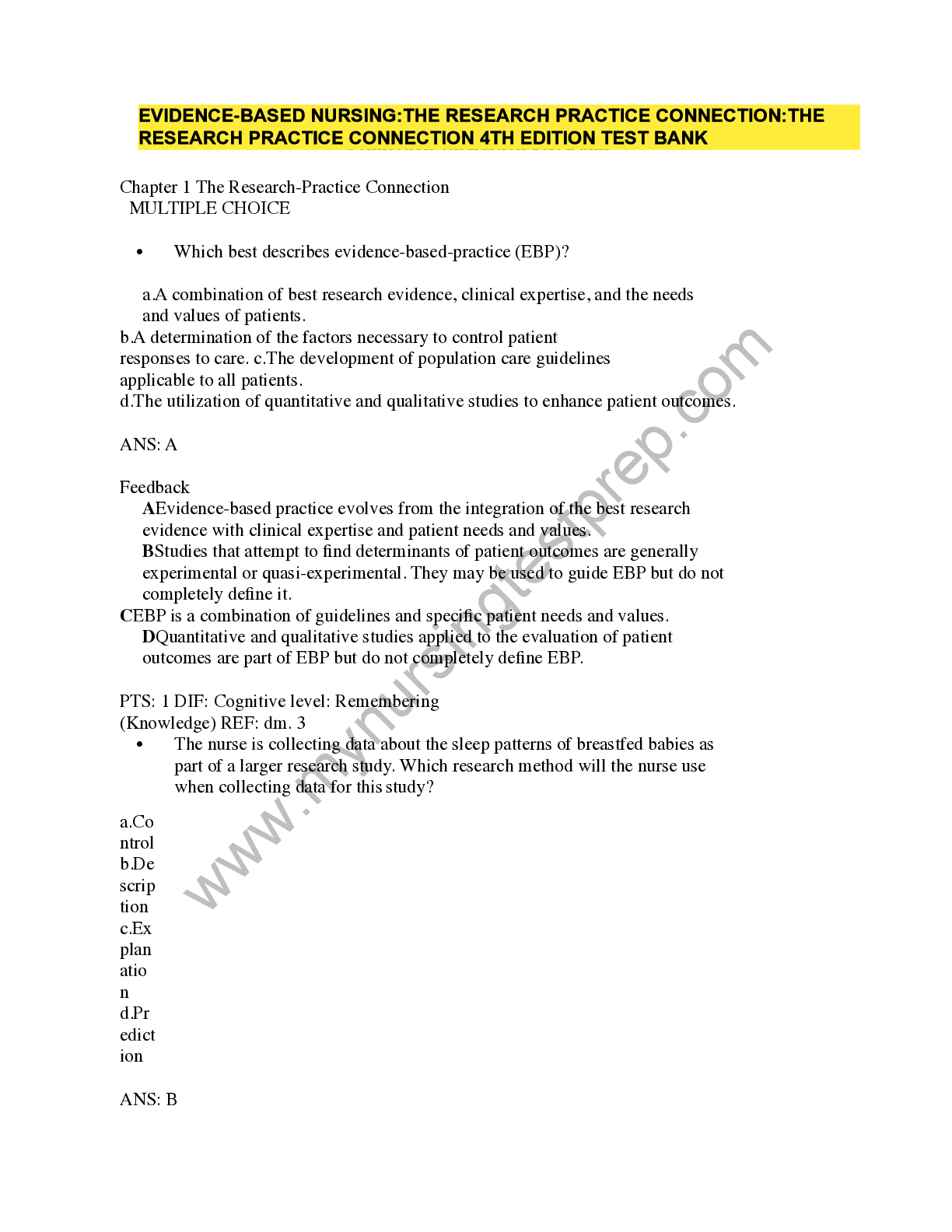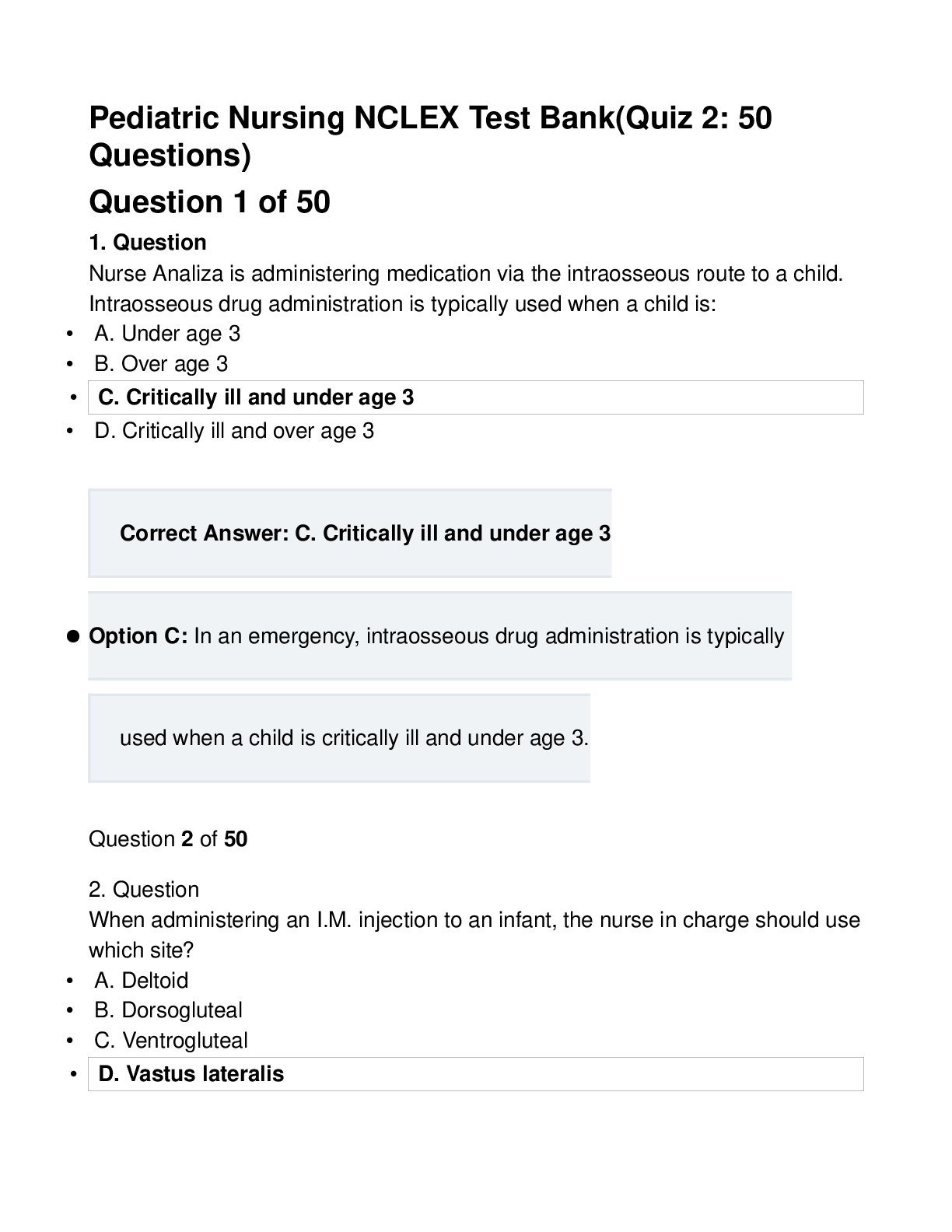*NURSING > TEST BANKS > TestBank-Perry-Maternal-Child-Nursing-Care-6th-2017-Best revision material of the year (All)
TestBank-Perry-Maternal-Child-Nursing-Care-6th-2017-Best revision material of the year
Document Content and Description Below
5. In caring for the woman with disseminated intravascular coagulation (DIC), what order should the nurse anticipate? a. Administration of blood b. Preparation of the client for invasive hemodynami... c monitoring c. Restriction of intravascular fluids d. Administration of steroids Test Bank - Maternal Child Nursing Care by Perry (6th Edition, 2017) 183 ANS: A Primary medical management in all cases of DIC involves correction of the underlying cause, volume replacement, blood component therapy, optimization of oxygenation and perfusion status, and continued reassessment of laboratory parameters. Central monitoring would not be ordered initially in a client with DIC because this can contribute to more areas of bleeding. Management of DIC would include volume replacement, not volume restriction. Steroids are not indicated for the management of DIC. PTS: 1 DIF: Cognitive Level: Comprehension REF: 332 OBJ: Nursing Process: Planning MSC: Client Needs: Physiologic Integrity 6. A primigravida is being monitored in her prenatal clinic for preeclampsia. What finding should concern her nurse? a. Blood pressure (BP) increase to 138/86 mm Hg b. Weight gain of 0.5 kg during the past 2 weeks c. A dipstick value of 3+ for protein in her urine d. Pitting pedal edema at the end of the day ANS: C Proteinuria is defined as a concentration of 1+ or greater via dipstick measurement. A dipstick value of 3+ should alert the nurse that additional testing or assessment should be made. Generally, hypertension is defined as a BP of 140/90 or an increase in systolic pressure of 30 mm Hg or in diastolic pressure of 15 mm Hg. Preeclampsia may be manifested as a rapid weight gain of more than 2 kg in 1 week. Edema occurs in many normal pregnancies and in women with preeclampsia. Therefore, the presence of edema is no longer considered diagnostic of preeclampsia. PTS: 1 DIF: Cognitive Level: Analysis REF: 303 OBJ: Nursing Process: Diagnosis MSC: Client Needs: Physiologic Integrity 7. The labor of a pregnant woman with preeclampsia is going to be induced. Before initiating the Pitocin infusion, the nurse reviews the womans latest laboratory test findings, which reveal a platelet count of 90,000, an elevated aspartate transaminase (AST) level, and a falling hematocrit. The nurse notifies the physician because the laboratory results are indicative of: a. Eclampsia. b. Disseminated intravascular coagulation (DIC). c. HELLP syndrome. d. Idiopathic thrombocytopenia. ANS: C HELLP syndrome is a laboratory diagnosis for a [Show More]
Last updated: 2 years ago
Preview 1 out of 837 pages

Buy this document to get the full access instantly
Instant Download Access after purchase
Buy NowInstant download
We Accept:

Reviews( 0 )
$21.50
Can't find what you want? Try our AI powered Search
Document information
Connected school, study & course
About the document
Uploaded On
Aug 07, 2021
Number of pages
837
Written in
Additional information
This document has been written for:
Uploaded
Aug 07, 2021
Downloads
0
Views
93











.png)

